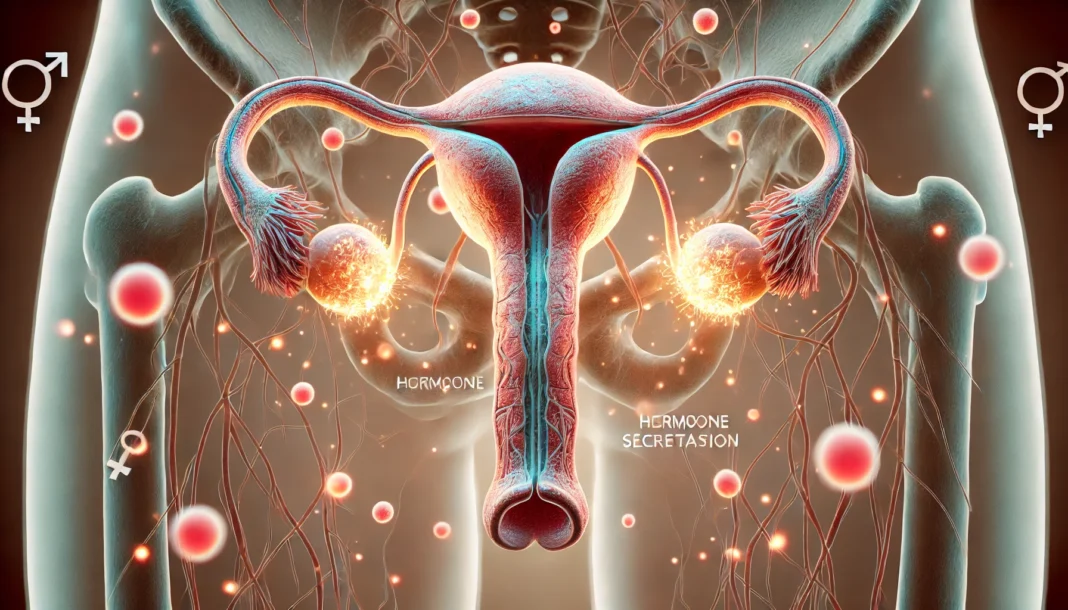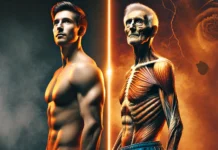Understanding Intersex Biology and Hormonal Development
Intersex individuals are born with sex characteristics that do not fit typical binary definitions of male or female. These characteristics can involve differences in chromosomes, gonads, hormone levels, or reproductive anatomy. While some intersex variations may not be immediately apparent at birth, others become more evident during puberty or later in life. Understanding how testosterone production functions in intersex individuals requires a thorough exploration of endocrine function, genetic influences, and gonadal differentiation.
You may also like: How to Get Your Testosterone Levels Checked: Best At-Home and Lab Testing Options
Testosterone, a key androgenic hormone, plays a crucial role in reproductive development, secondary sexual characteristics, and overall physiological function. However, testosterone production in intersex individuals depends on various biological factors, including gonadal structure, enzymatic activity, and hormonal regulation by the hypothalamic-pituitary-gonadal (HPG) axis. Given the diverse nature of intersex traits, there is no single pathway for testosterone production in intersex individuals; rather, it varies depending on genetic makeup and hormonal environment.
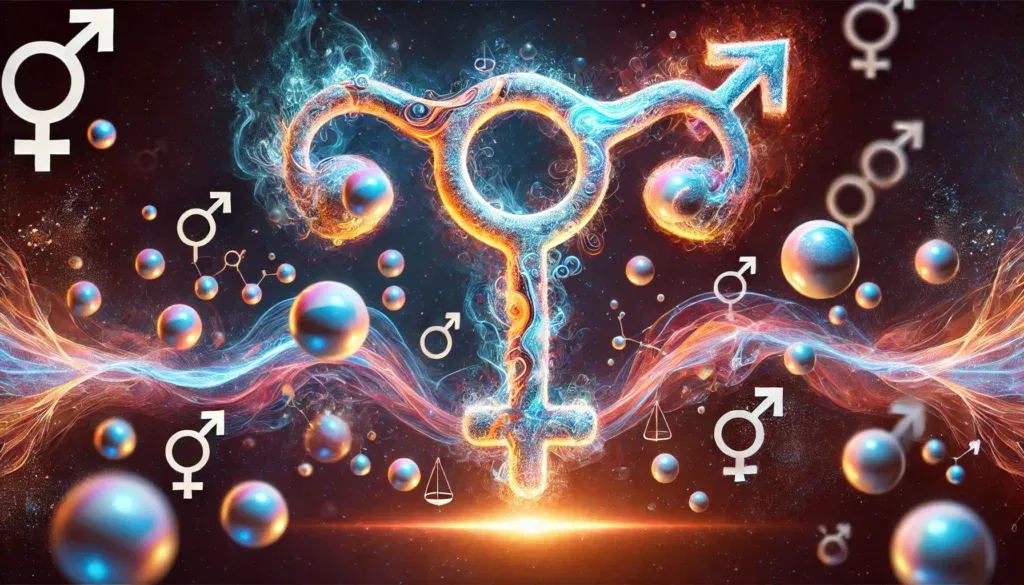
The Role of the Hypothalamic-Pituitary-Gonadal Axis
The HPG axis is central to regulating testosterone levels in all individuals, including intersex people. The process begins in the hypothalamus, which secretes gonadotropin-releasing hormone (GnRH). This hormone stimulates the anterior pituitary gland to release luteinizing hormone (LH) and follicle-stimulating hormone (FSH). These gonadotropins, in turn, act on the gonads—either testes, ovaries, or ovotestes—to stimulate hormone production.
In individuals with testes, LH promotes the Leydig cells’ production of testosterone, which then exerts systemic effects on the body. In those with ovarian tissue, the primary hormone produced is estrogen, though androgens like testosterone are also synthesized in smaller amounts. In intersex individuals with mixed gonadal structures, the hormonal output depends on the specific type of gonadal tissue present and its responsiveness to LH and FSH stimulation.
In some intersex variations, such as complete androgen insensitivity syndrome (CAIS), the body produces normal or even high levels of testosterone, but the androgen receptors do not respond to it effectively. This condition highlights the complexity of testosterone action—not only is hormone production important, but so is cellular sensitivity to androgens. The interaction between testosterone and its receptor sites ultimately determines its physiological effects.
Genetic Influences on Testosterone Production in Intersex Individuals
Genetics plays a fundamental role in determining testosterone levels in intersex individuals. The presence or absence of the SRY gene, located on the Y chromosome, influences gonadal development. In typical male development, the SRY gene directs undifferentiated gonads to develop into testes, which then produce testosterone. However, in certain intersex conditions, such as Swyer syndrome, an individual with an XY karyotype may lack functional SRY activity, leading to the development of nonfunctional gonads that do not produce significant testosterone levels.
Other genes, such as SOX9, DAX1, and WT1, also regulate gonadal differentiation and testosterone synthesis. Mutations in these genes can disrupt testosterone production, leading to various intersex presentations. Additionally, conditions like 5-alpha reductase deficiency alter the conversion of testosterone into its more potent form, dihydrotestosterone (DHT), affecting external genital development and secondary sexual characteristics.
In individuals with ovotesticular differences, where both testicular and ovarian tissue are present, testosterone production depends on the proportion and functionality of testicular tissue. These individuals may have testosterone levels that vary widely, influencing the development of secondary sexual traits such as facial hair, muscle mass, and voice deepening.
Enzymatic Regulation of Testosterone Synthesis
Testosterone production relies on a series of enzymatic reactions within the steroidogenesis pathway. Cholesterol serves as the precursor for all steroid hormones, including testosterone. Within the gonads, cholesterol is converted into pregnenolone through the action of cytochrome P450 side-chain cleavage enzyme (P450scc). Pregnenolone then undergoes further enzymatic modifications via 17-alpha hydroxylase and 17,20-lyase to form dehydroepiandrosterone (DHEA), androstenedione, and finally testosterone.
Enzymatic variations play a significant role in intersex testosterone production. For example, congenital adrenal hyperplasia (CAH), a condition caused by mutations in the 21-hydroxylase gene, leads to excess androgen production due to the adrenal glands compensating for deficiencies in cortisol synthesis. In XX individuals with CAH, the elevated androgen levels may result in virilization, including increased testosterone effects on secondary sexual characteristics.
Similarly, deficiencies in 5-alpha reductase, the enzyme responsible for converting testosterone into DHT, result in underdeveloped external genitalia in XY individuals. However, at puberty, testosterone surges may still lead to masculinization, demonstrating the body’s ability to utilize testosterone in alternative pathways.
The Influence of Adrenal Glands on Testosterone Levels
In addition to the gonads, the adrenal glands contribute to testosterone production. These small glands, located atop the kidneys, produce androgens such as DHEA and androstenedione, which can be converted into testosterone in peripheral tissues. While adrenal androgens play a minor role in testosterone levels in individuals with functioning gonads, they can significantly impact hormone levels in intersex individuals with gonadal insufficiency or dysgenesis.
For example, in individuals with Swyer syndrome, where the gonads fail to produce hormones, adrenal androgens may serve as the primary source of testosterone. Additionally, in CAH, adrenal hyperactivity leads to excessive androgen production, influencing testosterone-dependent characteristics regardless of chromosomal sex.
Variability in Testosterone Sensitivity and Receptor Function
Testosterone’s physiological effects are mediated by androgen receptors (ARs), which are distributed throughout the body in tissues such as muscle, bone, skin, and reproductive organs. Even when testosterone levels are within a normal range, the body’s response depends on receptor functionality.
Androgen insensitivity syndrome (AIS) is a prime example of this variability. In complete AIS, despite normal or elevated testosterone levels, the body fails to respond, leading to female-typical external anatomy. In partial AIS, testosterone may exert some effects, resulting in a spectrum of phenotypes ranging from predominantly male to ambiguous genitalia.
Receptor polymorphisms also affect testosterone sensitivity. Variations in the CAG repeat region of the androgen receptor gene influence receptor activity, with longer repeats being associated with reduced androgen responsiveness. This genetic variability further explains differences in testosterone effects among intersex individuals.
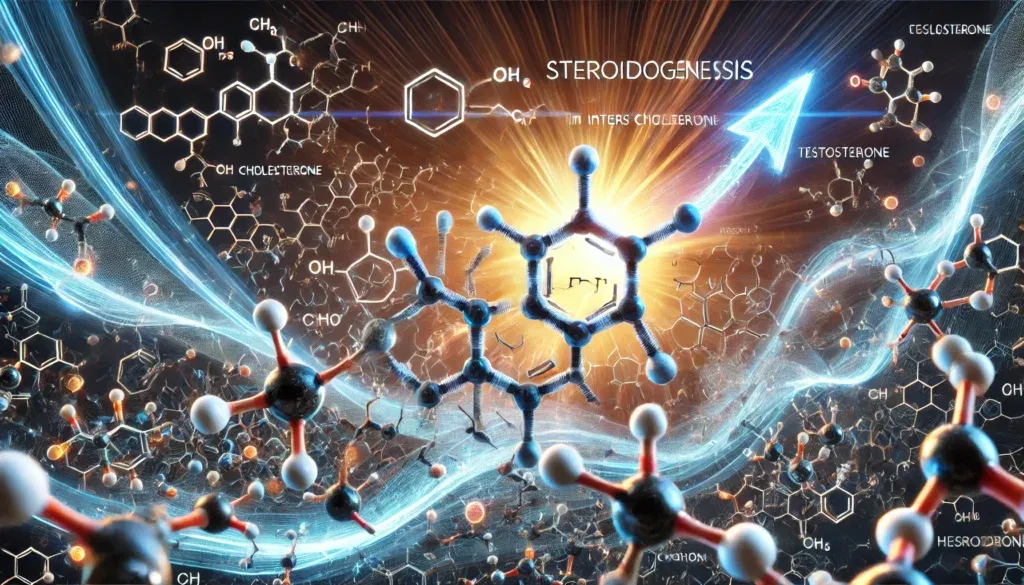
Frequently Asked Questions (FAQ) on Intersex and Testosterone Production
1. How does your body produce testosterone in intersex individuals?
Testosterone production in intersex individuals varies based on genetic, hormonal, and anatomical factors. Some intersex individuals have gonads that produce testosterone similarly to typical male development, while others may have unique endocrine functions that regulate hormone levels differently. For example, those with androgen insensitivity syndrome (AIS) may produce testosterone but have varying degrees of responsiveness to it. Additionally, some intersex individuals require medical interventions such as hormone replacement therapy (HRT) to regulate testosterone levels effectively. Understanding how does your body produce testosterone in intersex individuals requires considering both natural physiological processes and potential medical treatments.
2. How do intersex individuals produce testosterone differently from non-intersex individuals?
Intersex individuals may have diverse mechanisms for testosterone production due to variations in gonadal structure, enzyme function, and hormone receptor sensitivity. Some may have testes that function similarly to those in typical males, while others may have ovotesticular tissues that influence hormone synthesis uniquely. Certain intersex conditions, such as congenital adrenal hyperplasia (CAH), can lead to increased androgen production, impacting testosterone levels. Conversely, individuals with 5-alpha reductase deficiency may produce testosterone but experience differences in its conversion to dihydrotestosterone (DHT), affecting secondary sexual characteristics. The question of how do intersex produce testosterone highlights the complexity of hormone regulation and its diverse manifestations.
3. Can intersex individuals naturally regulate their testosterone levels?
Many intersex individuals naturally regulate their testosterone levels, but this depends on their specific biological makeup. Some have fully functional endocrine systems that maintain hormonal balance without medical intervention. Others may experience hormonal fluctuations that require monitoring by endocrinologists to prevent health complications. For instance, those with partial androgen insensitivity may need hormonal adjustments to align their levels with their physiological needs. When considering how does your body produce testosterone in intersex individuals, it’s essential to recognize that natural regulation is highly individualized and influenced by genetic factors.
4. What medical interventions exist for testosterone management in intersex individuals?
Medical interventions for testosterone management in intersex individuals include hormone replacement therapy, gonadectomy, and enzyme inhibitors. Those with testosterone deficiencies may be prescribed exogenous testosterone to maintain hormonal balance. In contrast, individuals with excessive testosterone production may receive medications that block androgen receptors or reduce hormone synthesis. Surgical options, such as gonadectomy, may be recommended in cases where gonadal structures pose health risks. The medical approach depends on the individual’s health needs, and understanding how do intersex produce testosterone can help determine the best course of action.
5. How does testosterone influence the physical development of intersex individuals?
Testosterone plays a crucial role in determining secondary sexual characteristics, but its effects vary among intersex individuals. Some may experience masculinization during puberty, while others may have partial or absent responses due to receptor sensitivity issues. For example, intersex individuals with CAH may develop increased muscle mass and body hair due to elevated androgen levels. Those with AIS, however, might not develop typically male secondary characteristics despite producing testosterone. Exploring how does your body produce testosterone in intersex individuals provides insight into the diversity of physical development patterns.
6. Are intersex individuals always aware of their testosterone levels?
Not all intersex individuals are immediately aware of their testosterone levels, as hormone levels can fluctuate and symptoms may not always be apparent. Some discover hormonal variations during puberty, fertility evaluations, or medical checkups. In certain cases, intersex individuals may experience unexpected physical changes that prompt further investigation into their hormonal profile. Regular endocrine assessments can help individuals monitor how do intersex produce testosterone and determine whether any medical interventions are necessary. Awareness and access to medical information are essential for informed decision-making.
7. What lifestyle factors can influence testosterone production in intersex individuals?
Lifestyle factors such as diet, exercise, stress, and sleep can influence testosterone levels in intersex individuals. A balanced diet rich in healthy fats, proteins, and micronutrients supports optimal hormone production. Strength training and regular physical activity can naturally boost testosterone levels, while chronic stress and inadequate sleep may lead to hormonal imbalances. Additionally, exposure to endocrine-disrupting chemicals (EDCs) in plastics and personal care products can impact hormone synthesis. Understanding how does your body produce testosterone in intersex individuals involves considering both biological and environmental influences.
8. How do intersex individuals experience the effects of testosterone compared to typical males?
The effects of testosterone in intersex individuals can differ significantly from those in non-intersex males due to variations in hormone sensitivity and receptor functionality. Some intersex individuals may develop traditionally male traits such as deepened voice and increased muscle mass, while others may experience partial or atypical responses. The presence of additional hormones, genetic factors, and potential enzyme deficiencies further shape the body’s reaction to testosterone. When analyzing how do intersex produce testosterone, it becomes evident that the hormone’s impact is highly individualized and cannot be generalized.
9. Can intersex individuals transition between testosterone and estrogen dominance?
Yes, some intersex individuals transition between testosterone and estrogen dominance depending on their biological traits and medical choices. Those who identify more with female characteristics may undergo estrogen therapy to suppress testosterone’s effects. Conversely, intersex individuals seeking masculinization may take testosterone to enhance male traits. In cases where endogenous hormone production is irregular, hormone therapy provides a means of achieving a balanced hormonal profile. The study of how does your body produce testosterone in intersex individuals offers valuable insights into the flexibility of hormone management strategies.
10. What future research is being conducted on testosterone production in intersex individuals?
Future research focuses on understanding genetic variations that influence testosterone production in intersex individuals, as well as developing personalized medical treatments. Scientists are investigating the role of hormone receptors and enzyme pathways in shaping androgen responses. Advances in endocrinology and personalized medicine aim to provide tailored therapies that align with individual needs. Additionally, research into non-invasive hormone monitoring techniques is improving diagnostic accuracy and treatment outcomes. The evolving knowledge of how do intersex produce testosterone is paving the way for better healthcare solutions and informed medical interventions.
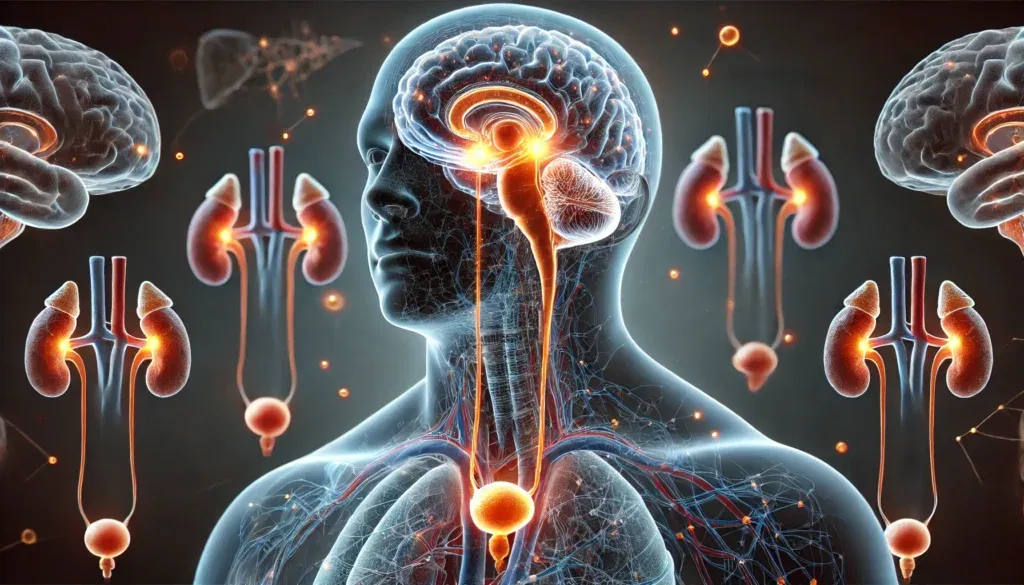
Conclusion: A Diverse Landscape of Testosterone Production in Intersex Individuals
Testosterone production in intersex individuals is influenced by a complex interplay of genetic, enzymatic, and endocrine factors. The presence of functional testicular tissue, the efficiency of enzymatic pathways, adrenal contributions, and androgen receptor sensitivity all determine how the body utilizes testosterone. Given the diversity of intersex conditions, no single model applies universally; rather, each individual’s hormonal landscape is unique.
Medical advancements in endocrinology and genetics continue to shed light on the intricate mechanisms of testosterone synthesis and action in intersex individuals. Understanding these processes not only deepens scientific knowledge but also informs medical and social approaches to intersex healthcare, ensuring that individuals receive personalized and affirming treatment options that align with their physiological and psychological needs.
intersex hormone production, testosterone synthesis pathways, androgen receptor sensitivity, intersex endocrinology, gonadal differentiation, adrenal androgens, androgen insensitivity syndrome, congenital adrenal hyperplasia, steroidogenesis, intersex genetic variations, testosterone biosynthesis, hormonal regulation in intersex, 5-alpha reductase deficiency, testosterone and DHT conversion, adrenal testosterone production, intersex testosterone levels, testosterone receptor function, endocrine function in intersex, intersex medical research, intersex hormone therapy
Further Reading:
Circulating Testosterone as the Hormonal Basis of Sex Differences in Athletic Performance
Disclaimer: The information provided in this article is for general informational purposes only. The content does not constitute professional advice of any kind, including but not limited to medical, legal, or financial advice. HisHealthMag and its contributors make no representations or warranties regarding the accuracy, completeness, or reliability of the information presented. Always seek the advice of a qualified professional for any specific concerns or questions you may have. Neither HisHealthMag nor its authors assume any responsibility or liability for any actions taken based on the information provided in this article. The views and opinions expressed are those of the author(s) and do not necessarily reflect the official policy or position of HisHealthMag.


